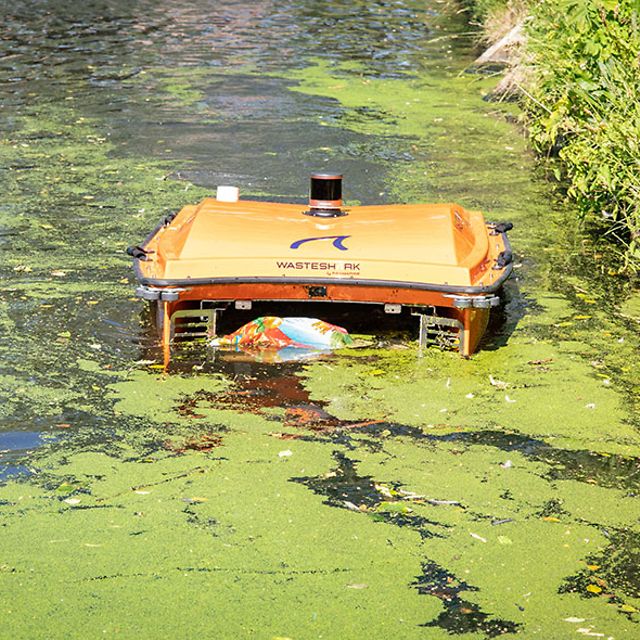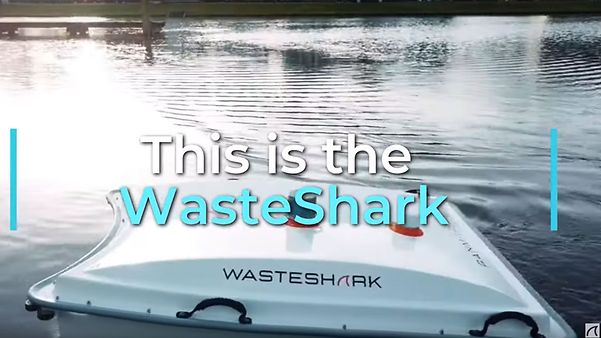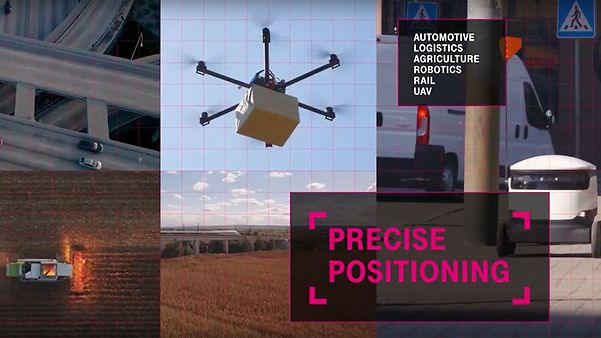The vehicle can also be used to remove small amounts of oil that may be generated in harbors during boat refueling. Or helps in the fight against invasive plants: The water hyacinth, for example, with its purple flowers, is usually a welcome guest in the garden pond. In the bathing lake or reservoir, on the other hand, it is an uncontrollably proliferating nuisance. The company BERKY from the Emsland, one of the partners of RanMarine, gets to grips with it professionally with special mower collecting boats. However, the ten-meter long and ten-ton heavy watercrafts do not reach all corners. This is where the WasteShark now comes into play as a support, which can be steered by remote control to wherever plant remains or litter are left over.
RanMarine began in 2016 with a model that was radio controlled. Since 2019, the WasteShark – a world’s first funded by the EU's Horizon 2020 program, among others – is also traveling autonomously: equipped with a front camera, a LiDAR (light detection and ranging) sensor, and a GPS receiver, the cleaning drone can independently orient itself in bodies of water and avoid obstacles. Users define the collection route with various waypoints beforehand on a digital map. However, the system also had its weaknesses: The inaccuracy of GPS (Global Positioning System) when determining the position via satellite can be several meters. Sufficient for a hiking tour – insufficient for the operation of an autonomous robot that has to master special tasks.



